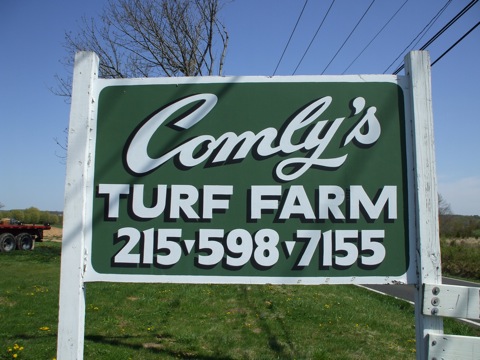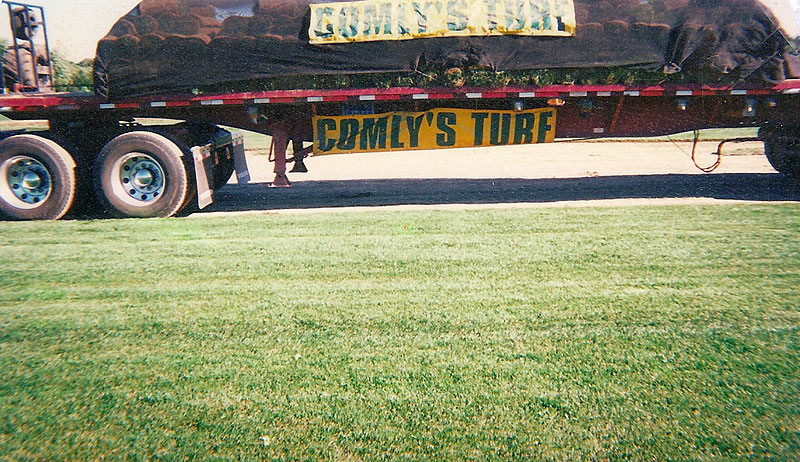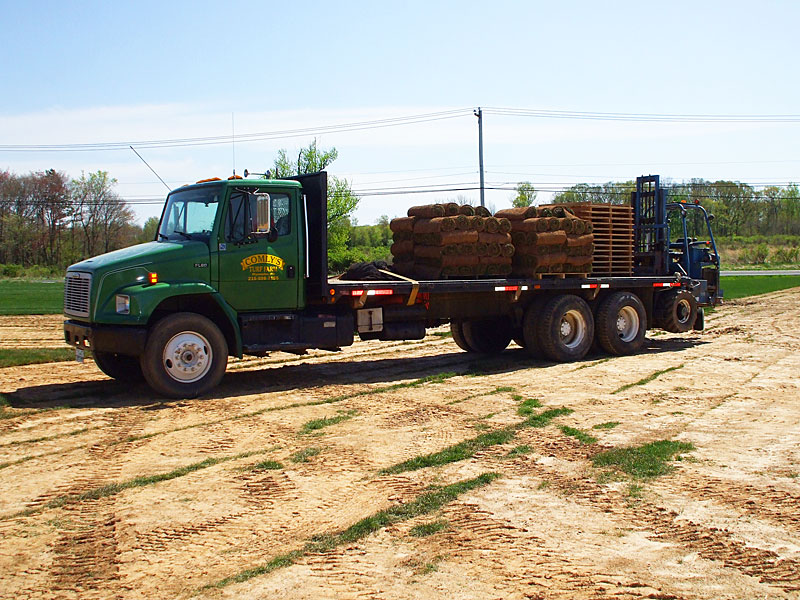Sod FAQ
TLC Guide for the Best Grass Around
(Installation Information for instant Lawn)Q: Why is Sod the easiest, surest and most economical way?
Have you ever totaled the time, thought and money it takes to establish lawn? It takes two years and the result is often disappointing. Lawn sodding can be compared to other ready-mades of today - convenient, practical, and in the long run, it is the least expensive way to that beautiful lawn. You eliminate the gamble - we have done the work and worrying for you and we guarantee our premium Turf Grasses. Our Pennsylvania Certified Sod comes to you weed and disease free - it's instant lawn.
Q: How early in spring and how late in fall can sod be laid?
A: This is related to temperature--from the time the grass comes out of dormancy (40° - 60°) until the ground freezes (30°), generally March 1 to Christmas.
Q: Can sod be laid in midsummer?
A: Yes, as long as the roots can attach themselves to the new soil the grass will continue to grow. The sod must be watered.
Q: How should the soil be prepared for sod?
A: For best results, 4 to 6 inches of topsoil should be used.
• Have your soil tested for fertilizer and lime requirements. Your county agriculture agent has soil testing.
• Begin by loosening the soil with a power rototiller, garden tractor, or by hand-spading. Care should be taken to avoid turning up subsoil and burying good topsoil. Before final grading, the soil could be settled with water; this may insure a more even grade and eliminate uneven settling. The final preparation and leveling works best done by hand with a heavy hoe or rake to break up any clods. Fill in any low spots. For best results, shortly before the final grading is completed, apply 100 lbs. pulverized limestone per 1000 sq. ft. and an inorganic complete fertilizer such as 8-24-10 at the rate of 30 lbs. per 1000 sq. ft. This is raked into the soil to a depth of 2" with the final raking the sod roots will go as deep as the fertilizer is.
Q: How do you measure for ordering sod?
A: Use a tape measure and measure the area (length, width, any unusual features) and put the measurements on a sketch. You can figure the square footage or we can help you. Take delivery on the day you plan to start laying the sod. Install on the day of delivery.
Q: How do you lay sod?
A: Start at a straight line such as a driveway or walk. Put the sod into place with careful attention to tight joints, with avoidance of any stretching. The strips of sod are tough, easy to cut and handle. Lay out the sod as you would a rug or tiles. Stagger the joints in each new row like rows of bricks. Use a sharp knife for shaping the sod around trees, at flower beds or along borders.
Q: What is the best watering procedure?
A: Immediately after placement, the grass is given a good soaking. This is especially important in hot weather. It is better to water heavily at frequent intervals than only when signs of wilting begin to show.
Q: Should sod be rolled after laying?
A: When the sod has dried sufficiently to require a second watering, it can be rolled. Do not roll or let anyone walk on new sod when area is wet.
Q: When can you mow newly sodded areas?
A: Mowing can start 6-7 days after installation, generally 1½ to 2 inch height. Drastic changes in height of grass is not good, it is better to mow often and maintain grass at a set height. Keep blades sharp.
Q: Are there any traffic cautions?
A: Use your new sodded lawn sparingly until good root establishment has taken place (2-3 weeks.) Avoid concentrated play activities, dog traffic or similar rough usage until four weeks have passed.
Q: How much and how often should a lawn be fed or fertilized per year?
A: For best results, an early spring and early fall fertilization program is recommended. Use reliable turf food and follow recommendations. For example: Use 10 lbs. of a 20-12-8 organic fertilizer per 1000 sq. ft. It is best to apply fertilizer when grass blades are dry in order to avoid burning the lawn. The fertilizer should be washed into the turf by water immediately after application. If you do not fertilize your trees and shrubs independently, remember that the turf around these should be fed more liberally or more frequently.
Q: What should I do about Lime?
A: Have your soil tested for lime. A general suggestion for lime is 60 to 80 lbs. of ground limestone per 1000 sq. ft. of lawn applied every 2-3 years. Lime can be applied any time of the year.























